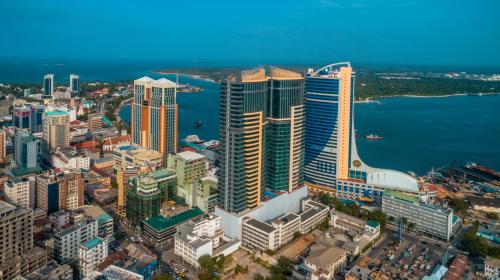It is almost a tradition in Brazil. After the anticipation and fascination that accompanies any visit by a U.S. president subsides, a feeling of mild frustration usually sets in the days following. No substantive deals were signed and controversial issues remained untouched during President Obama’s visit to Brazil. In this sense, the notion of benign indifference best describes the recent U.S.-Brazil diplomatic agenda.
Underneath this reasoning, however, lies a more subtle reality. After all, when it comes to presidential diplomacy, symbolic gestures are as revealing as formal deals. For Brazil and the United States, with both presidents facing domestic fiscal constraints, rhetoric not only fills in the voids left by shortsighted policies but it is also used as an instrument to influence future and hopefully more long-term, effective policies.
With that said, three conclusions might be drawn from the President Obama’s visit to Brazil in the last week.
First, despite the lack of notable deals and the recent disagreements (over Iran, for example), U.S.-Brazil relations are kept on track and sustained by a comprehensive network of exchanges among the private sector in both countries. During the Obama’s visit to Brasilia, both presidents formally agreed to expand the cooperation in numerous policy areas such as strengthening the U.S.-Brazil economic relations, launching a strategic energy dialogue, promoting democracy and human rights, promoting research and higher education exchanges between the United States and Brazil and strengthening defense and security cooperation, among others.
This importance is highlighted by two main facts: 1) the United States remains one of Brazil’s main economic partners in trade and investment; 2) Brazil’s rising economy and favorable outlook (World Cup, Olympics, pre-salt oil) point to the growing importance of the country to the U.S. economy.
Second, the fact that controversial issues were avoided, at least in public, suggests that the two countries are agreeing to disagree on many levels. It is true that Brazil’s stance on the Iranian nuclear program shifted substantially since President Rousseff’s inauguration, but a highly contentious matter for both countries is China, which is Brazil’s main trading partner. In fact, for the first time since the 1930s the United States is no longer Brazil’s major trading partner. From both the Brazilian and American perspectives, this might be seen as yet another dimension of the “Chinese threat”. Both the Brazilians and the Americans are worried and uncertain of what to do, so they both have reasons to find ways to manage the Chinese giant. Concerns about the impact of Beijing’s currency manipulation and bilateral trade imbalances are well known, but less noticeable is the growing competition between American and Chinese products in Latin America.
While the U.S. seeks to forge a coalition to put more pressure on China’s economic policies, Brazil exerts a more reluctant stance, preferring multilateral forums, such as the G-20, to disguise its increasing concerns with the Asian country. That is the reason why it is not possible that Brazil and the United States will forge an anti-China alliance. It is plausible to imagine that China was indeed one of the talking points between Obama and Rousseff, but there are several reasons why Brasilia has refrained from publicly criticizing China. In light of Rousseff’s upcoming trip to Beijing in April, it would seem counterproductive and too risky to blame China for Brazil’s troubles at this moment. From the Brazilian perspective, it is a typical sequential game in which Obama’s visit to Brazil was just the first round and the Rousseff visit to China is the second round. Also in line with Brazilian diplomatic tradition, Rousseff will seek an equidistant position for Brazil if a superpower dispute arises — a rationale that makes even more sense considering that China and the United States are Brazil’s two main trading partners.
Third and most important, Obama’s trip reinforces the idea that the United States is beginning to reconsider its diplomatic framework in dealing with Brazil and the rest of Latin America. Two distinctively different speeches were delivered in Brazil and in Chile. In the speech exclusively for Brazil, Obama explicitly recognized the need to deal with Brazil as an emerging country like India and China. In his speech in Santiago, Obama aimed to speak to Latin America in general. Despite falling short of endorsing Brazil’s bid for a permanent seat in the UN Security Council, it is noteworthy to mention that the symbolism of Obama’s gesture fits rather nicely into Brazil’s strategy to seek more international leverage and prestige. For Brazilian diplomacy, recognition is a valuable asset.
Although the vast majority of Americans know very little, if anything, about Brazil, Obama’s speech reverberated nicely to the Brazilians elite and inner circles of the Rousseff administration, as he recognized not only Brazil as a regional leader but also as a global power. By delivering a specific message to Brazilians, Obama seems to recognize that Brazil should no longer be understood exclusively as part of a broader, yet fuzzy and increasingly diversified Latin American agenda. While many countries in the region see the United States as a solution to their problems (monetary resources, military assistance, etc.), Brazil sees American presence in the region with some concerns. What Brazil wants from the U.S. is recognition and a more balanced trade game.


Commentary
Op-edAssessing Obama’s Visit to Brazil: A New Framework for Relations with Latin America?
March 25, 2011